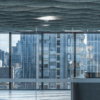The best discounts this week
Every week you can find the best discounts here.
Soundproofing Your Home Theater for an Immersive Experience
Building a home theater is an investment in leisure and entertainment. But even the most advanced audio-visual equipment will fall short if the acoustics aren’t right. A poorly soundproofed room will diminish the quality of your sound system, bleed noise into other parts of your home, and prevent you from experiencing the truly immersive cinematic experience you crave. This article explores the crucial aspects of soundproofing your home theater, guiding you toward a space optimized for exceptional audio fidelity and complete sonic privacy.
Understanding the Fundamentals of Soundproofing
Before diving into specific solutions, let’s clarify the difference between soundproofing and sound absorption. Soundproofing focuses on blocking the transmission of sound waves, preventing them from entering or exiting the room. Sound absorption, on the other hand, focuses on reducing the reverberation and echoes within the room itself. For a truly immersive home theater, you need both.
Sound travels through three primary pathways: airborne transmission (through the air), impact transmission (through vibrations in the structure), and flanking transmission (through gaps and cracks in walls, floors, and ceilings).
Addressing Airborne Sound Transmission
This is the most common source of sound issues in home theaters. Effectively blocking airborne sound requires careful consideration of wall, floor, and ceiling construction. Here’s what to consider:
- Double-wall construction: Building a secondary wall with a significant air gap (4-6 inches) between the existing wall and the new one significantly reduces sound transmission. Fill this gap with sound-absorbing insulation like mineral wool or fiberglass.
- Mass-loaded vinyl (MLV): This dense, flexible material is extremely effective at blocking sound transmission and is often installed between the wall layers.
- Resilient channels: These metal channels decouple the drywall from the framing, further reducing sound transmission.
- Soundproof doors and windows: Invest in solid-core doors with robust weatherstripping, and consider double- or triple-paned windows with laminated glass for superior sound isolation.
Minimizing Impact and Flanking Transmission
Impact sound, such as footsteps from above, can significantly disrupt your movie experience. Addressing this requires a multi-pronged approach:
- Decoupling the floor: Floating floors, installed on resilient underlayment, reduce the transmission of impact noise. This isolates the floor from the underlying structure.
- Soundproof ceilings: If your home theater is on the ground floor, consider soundproofing the ceiling to block noise from below. The same principles as wall construction apply here.
- Sealing gaps and cracks: Carefully seal any gaps or cracks around doors, windows, and electrical outlets with acoustic sealant. This prevents flanking transmission.
Optimizing Room Acoustics with Sound Absorption
Even with effective soundproofing, unwanted reflections and echoes can degrade audio quality within the room. Sound absorption is crucial for creating a balanced and immersive soundscape:
- Acoustic panels: Strategically placed acoustic panels absorb sound reflections, reducing reverberation and improving clarity.
- Bass traps: These specialized panels absorb low-frequency sounds, crucial for controlling bass build-up in corners.
- Carpet and rugs: Soft furnishings like carpets and rugs absorb sound and help dampen reflections.
- Curtains and drapes: Thick, heavy curtains can also contribute to sound absorption.
Choosing the Right Materials and Professionals
The effectiveness of your soundproofing depends heavily on the quality of materials used and the expertise of the installers. Consider working with experienced acoustic consultants or contractors specializing in home theater soundproofing. They can help you choose appropriate materials and ensure proper installation for optimal results.
Conclusion: Transforming Your Home Theater
Soundproofing your home theater is an investment that delivers exceptional returns. By carefully addressing airborne, impact, and flanking transmission, and by strategically incorporating sound absorption techniques, you can create a truly immersive cinematic environment that rivals the best commercial theaters. The enhanced audio fidelity, noise isolation, and overall viewing experience will make your home theater a haven for unforgettable entertainment.





